This isn't just an idealistic view, but rather a strong corporate culture at work. In this contemporary world, where the acquisition of talent has become exceedingly difficult and innovation defines every movement forward, your company culture assumes a osition of utmost importance, even above strategies.
With this post, we aim to help you understand how to build a corporate culture that aims to achieve business objectives while simultaneously enhancing employee morale. So if you are a fast-growing startup or have been an established business refining your roots, let's guide you on how to transform your organization into a source of motivation, creativity, and resounding success. In the post-COVID era, having agile, high-performance cultures isn’t an option, but rather a prerequisite. In the age of remote work and cross-border collaboration, coupled with a dire need for purposeful leadership, companies are required to cultivate impact-driven, flexible, and inclusive cultures.
Set Core Values—and Adhere To Them
For any business, corporate values are the guiding star to all operations and undertakings. To ensure success and heighten the reputation of your business, core values should not be limited to mere decorative frames hung on walls. Values should be a cornerstone for all decisions, processes, and even hiring new employees.
Action Tip- Create value definitions that include your employees’ views. Contributory participants are more inclined to adopt and defend these values. Conduct a core values workshop or an open forum to capture core principles for the organization. Then, provide realistic scenarios for how these values need to manifest in work behavior.
Ensure There Are No Gaps In Leadership Communication

Trust is the foundation for high-performance cultures, and it emanates from the top of the hierarchy. Leaders must not only speak transparently but also act consistently, honor commitments, and show compassion.
Action Tip- Establish town halls, AMAs, or even internal memos that allow leadership to share relevant updates, objectives, and challenges as they go. Training for leaders on emotional intelligence and active listening would elevate their rapport with employees.
Emphasize Ownership While Being Accountable

A feeling of ownership among employees leads to high motivation and better performance. Accountability is not an environment of blame, but one where employees are encouraged to take responsibility and make strategic decisions.
Action Tip- Clear goals and expectations should be set, and then competence-based self-discipline. Introduce employee participation in defining their tasks using the OKR model for collective progress monitoring. Embrace and reward failure as a learning step.
Recognize and Reward Contributions
Lady Melbourn once said, “Recognition is the greatest motivator.” Engagement boosts productivity. Whether it is a small mention in a team meeting or as a part of the reward system, recognition of efforts, both big and small, maintains enthusiasm, dedication, and loyalty to the firm.
Action Tip- Establish a recognition program driven by peers. This way, respect is freely given and not only effort-based. From this standpoint, recognition can be appreciated in numerous ways, such as creativity, ingenuity, or strong effort, alongside the usual top-down recognition.
Encourage Continuous Learning 
Organizations that excel foster a highly motivated workforce. Alongside structured learning programs, they enable participation in informal staff-led sessions and train the trainers, thereby making learning a progressive part of the firm’s culture, which leads to unrivaled growth prospects.
Action Tip- Provide access to external courses and internal workshops, which include mentorship programs. Allocate upskilling budgets and embed time for upskilling directly into work schedules, alongside holding curiosity-driven experiment seasons which are structured as “learning days".
Promote Diversity, Equity, and Inclusion (DEI) 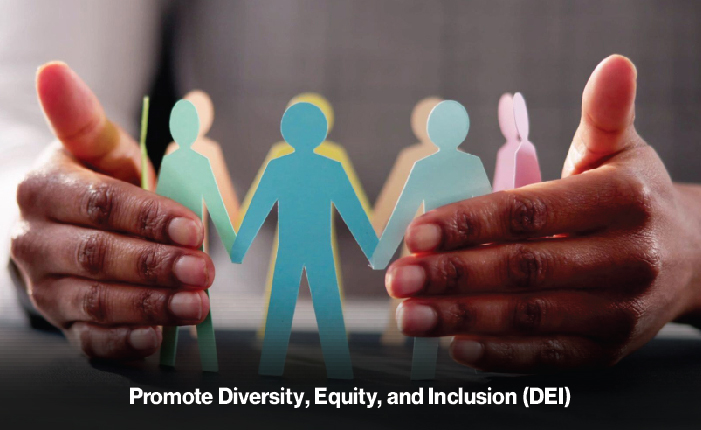
Built around inclusive and equitable structures, organizations become more progressive, and that leads to improved creativity and effective problem-solving. DEI should not just be a metric, but rather an ethos around which the organization’s mission is based.
Action Tip- Start with constructing a DEI policy and core highlighted training sessions alongside ensuring respectful environments where divergent views are always promoted, then escalate to forming these employee resource groups (ERGs), which strengthen diverse representation across leadership roles and structures based on flexible leadership.
Encourage Feedback Flow in Both Directions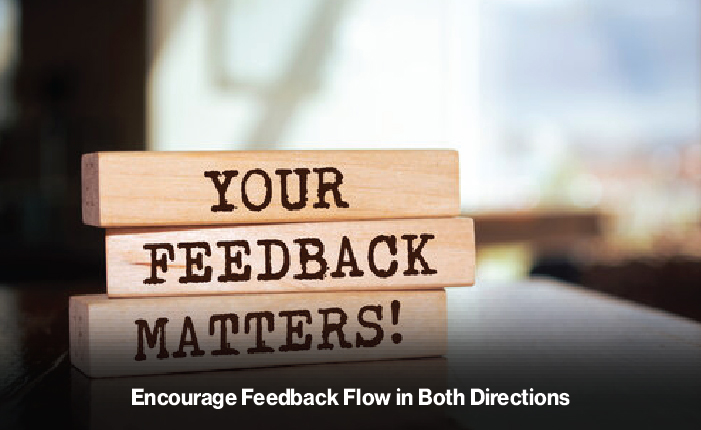
Feedback should go beyond the scope of yearly evaluations. A high-performance culture welcomes feedback in every interaction, both informally and through ongoing dialogues.
Action Tip- Promote regular one-on-ones, team retrospectives, and anonymous feedback collection. Demonstrate that feedback has tangible outcomes. Create systems that transform actionable insights into quantifiable advancements.
Prioritize Well-being, Allow Flexible Hours
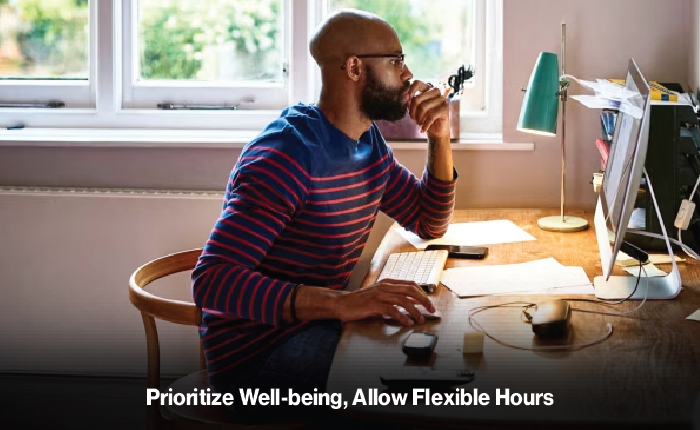
Productivity decreases significantly when burnout strikes. High-performing teams require adequate rest, emotional support, and flexibility.
Action Tip- Promote the introduction of mental health days, wellness initiatives, or flexible working hours. Reframe rest as a strategic benefit rather than a weakness. Equip employees with mental health resources and encourage healthier work boundaries among leadership.
Create a Roadmap of Defined Internal Communication
It is quiet in the office. Everyone seems to be busy with their tasks, but upon close examination, no progress is made. It can be a sign of ineffective communication, which generates misunderstandings that are burdensome and counterproductive.
Action Tip- Implement Slack or Microsoft Teams to foster efficient communication. Define response and clarity timelines. Support informal team huddles or check-ins to enhance lively collaboration.
Remove the Disconnect Between Purpose and Performance
An employee’s understanding of their role significantly increases when their work intersects with the broader organizational objectives. This creates a more motivated and engaged workforce.
Action Tip- Continually engage employees through individual storytelling by connecting them to the wider organizational objectives. Share impact stories to illustrate how daily tasks create everyday work value. Use stories to emphasize how every single employee contributes toward achieving a higher organizational purpose.
Encourage Collaboration 
High performance is not achieved in silos. Collaborative teams are more innovative, agile, and successful.
Action Tip- Organize cross-functional teams for major initiatives, ensuring role definition is clear. Foster brainstorming and establish both physical and virtual collaborative spaces where teams can share freely.
Incorporate Flexibility and Hybrid Work Models 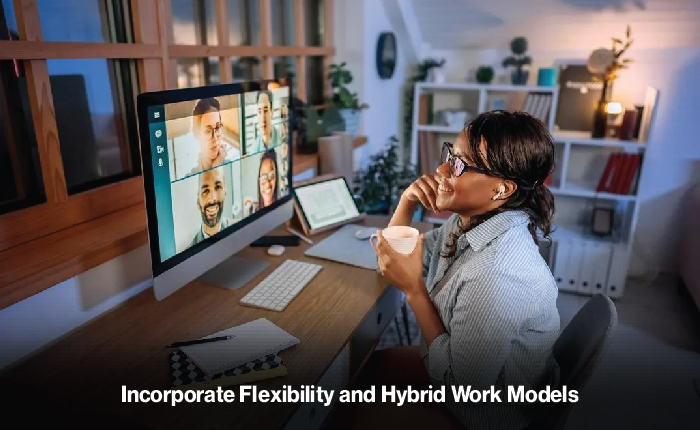
The work environment after the pandemic has evolved, and so should leadership approaches. People are valuing choice and flexibility more than ever.
Action Tip- Offer remote and office work options. Emphasize results over the number of hours worked. Encourage trust through offering flexibility and allowing for digital-first team social activities.
Establishing a Strong Culture Is The Responsibility of Every Employee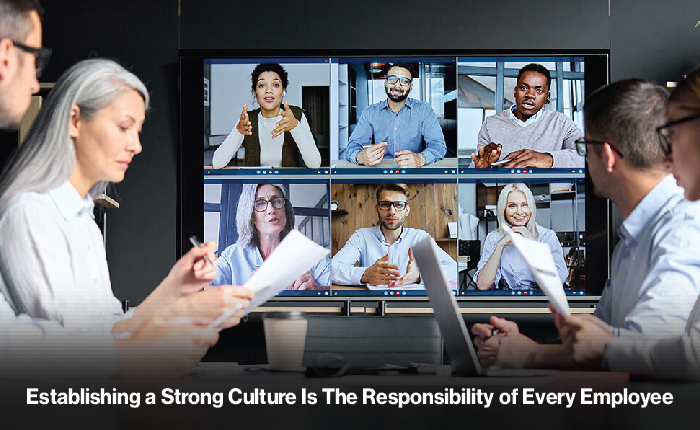
Creating a high-performance corporate culture is not a single project or initiative—building it is an ongoing process. Everyone, from leaders to interns, has a responsibility towards shaping the culture. When successfully designed, culture serves as the ultimate competitive differentiator to attract top talent and ensure sustained success.
If you are forming a new team or restructuring an old one, keep in mind that culture is not built in a day. Nevertheless, both positive and negative actions taken today will directly shape results in the future.
Raise the bar of performance and set a solid foundation with the following- Act purposefully, be unwavering in your approach, and lead with compassion, and you will cultivate a culture people want to engage with and remain in.






